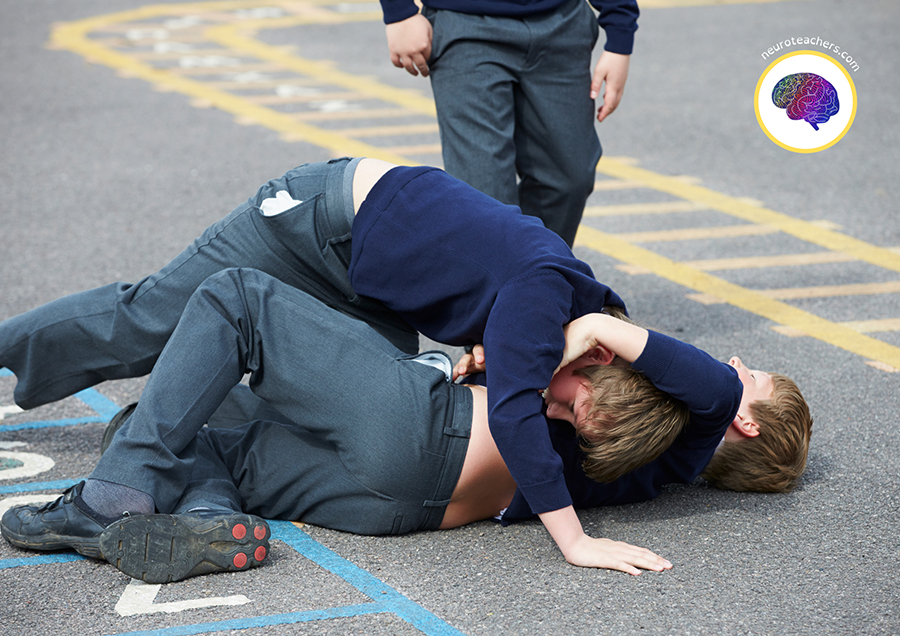What is Challenging Behaviour?
When understanding behaviour in our neurodivergent pupils, it is important to note that many people mistake challenging and disruptive behaviour. It is important to know the difference between the two. This is because the way in which you deal with them is subtly different. I’ll be writing a series of blogs explaining that in more detail. This blog however is an overview of this topic.
Challenging behaviour is described by British Royal Society of Psychiatrists 2007 as behaviour which is challenging to the extent that it threatens the danger of self or others or causes serious damage to property which may cause significant risk safety. In short challenging behaviour is dangerous.
This quote also states that challenging behaviour is said to potentially bring about exclusion. However, this doesn’t mean exclusion as in being suspended from school, this means exclusion from society, in that, people don’t want to be around you when you are acting in a dangerous manner. In other words, challenging behaviour is a crisis so severe in intensity that it’s dangerous and people find it hard to be near you. It’s a meltdown or shut down, a fight, flight, freeze or fawning situation.
When neurodivergent people are in crisis, we have completely lost control of our ability to reason. It is a purely emotional response that comes from the limbic system and hype campus, our emotional centre of the brain. Which is why he needs to be dealt with quite differently from disruptive behaviour, where we still have an element of control.

What are meltdowns and shutdowns?
Meltdown and shutdown are two different but remarkably similar way of showing an individual is in crisis. Meltdowns are probably the most “famous “clothes way of understanding of crisis. This is where someone demonstrates explosive behaviour turning their dysregulation outward into the world so that everyone can see it. This is stereotypical challenging behaviour and may result in actions such as shouting, physical violence, throwing objects or running away.
Equally serious, however, is shut down. Shutdown is an internalised way of showing a crisis. It might look like disassociation, blankness, hiding, running away, curling up in a ball or rocking. Often, it’s not seen as serious as meltdown, but believe me, it’s the imploding, where a neurodivergent child turns their dysregulation in on themselves, which can often cause the most long-term damage to mental health. I’m far more worried for those who shutdown than I am about their exploding counterparts.
Shutdown is catergorised challenging because it can result, in danger to self. In some cases, children who shut down may run away or hide in dangerous situations this makes them vulnerable. But long-term children who continuously freeze or fawn can be at risk of grooming because of extreme agreeability and the desire to fit in. They may also be at danger of serious mental health difficulties especially if they burn out later.
What can we do to help?
First thing to do is to understand the child is in a crisis in the limbic system, and unable to reason. This means that any attempt to tell them to “calm down “ will be futile (When in the history of calm down did anyone ever calm down from being told to calm down?)
The only way out of crisis is through. The Neurodivergent child or young person who is in crisis needs time to regulate on a physiological level.
This means that there are two very important things that you need to do.
Shut up…
…and get out the way.

Doesn’t sound very nice. I’m not being unkind. But if you are talking is only going to make things worse. Only speaking to them if they ask you a question, or if you need to ask them a simple yes or no question.
So, use as few words as possible. Simply say “ I’m here for you when you are ready to talk.” And be patient.
And give the child or young person space. This does not mean leaving them alone in a room. That’s likely to cause even more dysregulation. However, crowding a neurodivergent child in distress is also only going to escalate things. Try leaving at least 2 m space for the child in crisis. Keep the environment quiet. Hold the space so the child feels safe.
How long does it take to calm down after a crisis?
Honestly, it takes as long as it takes. But usually for the cortisol (a chemical involved in stress) to leave your body. It takes around about one hour. With practice you can shorten this time but at first, and especially if you are experiencing regular crisis situations, leave at least one hour for the child to properly, physiologically, calm down.
